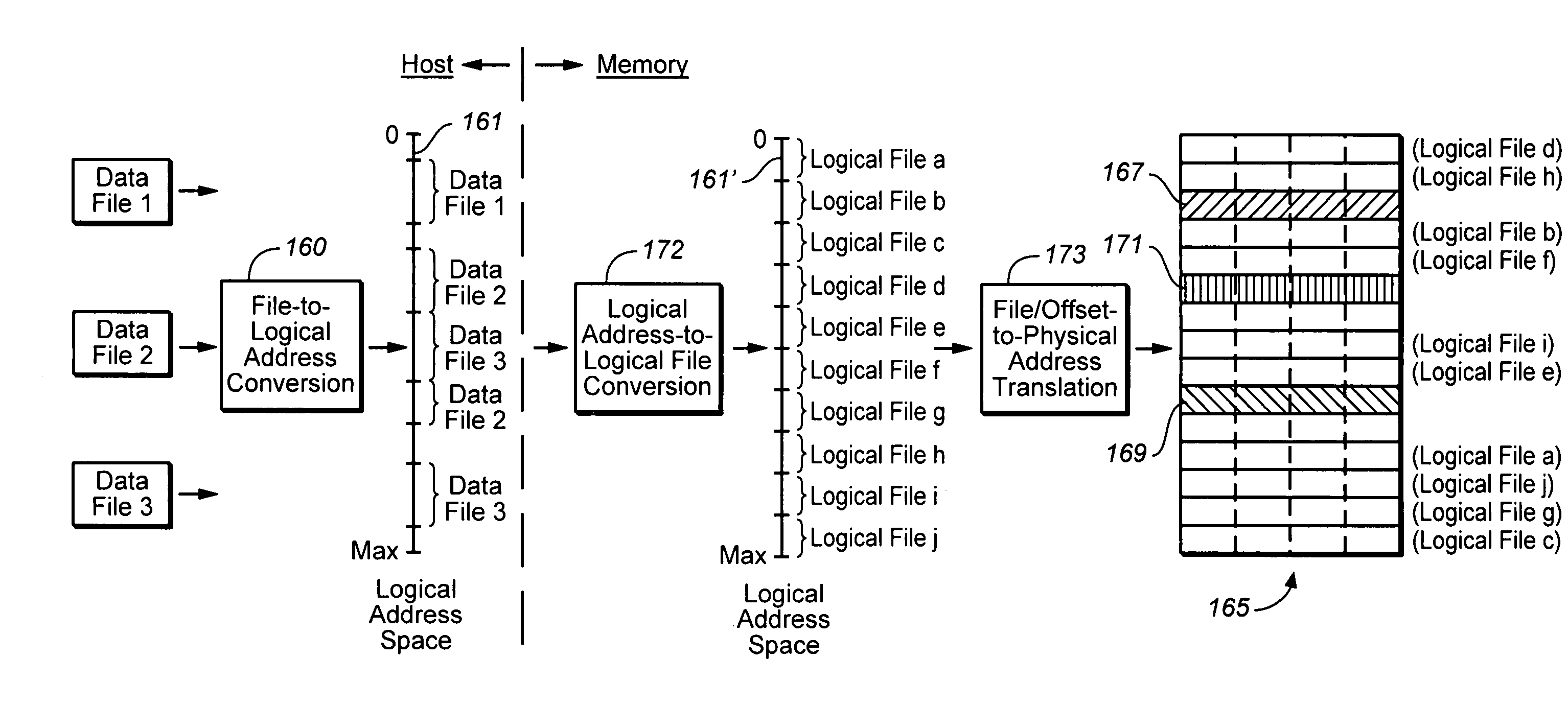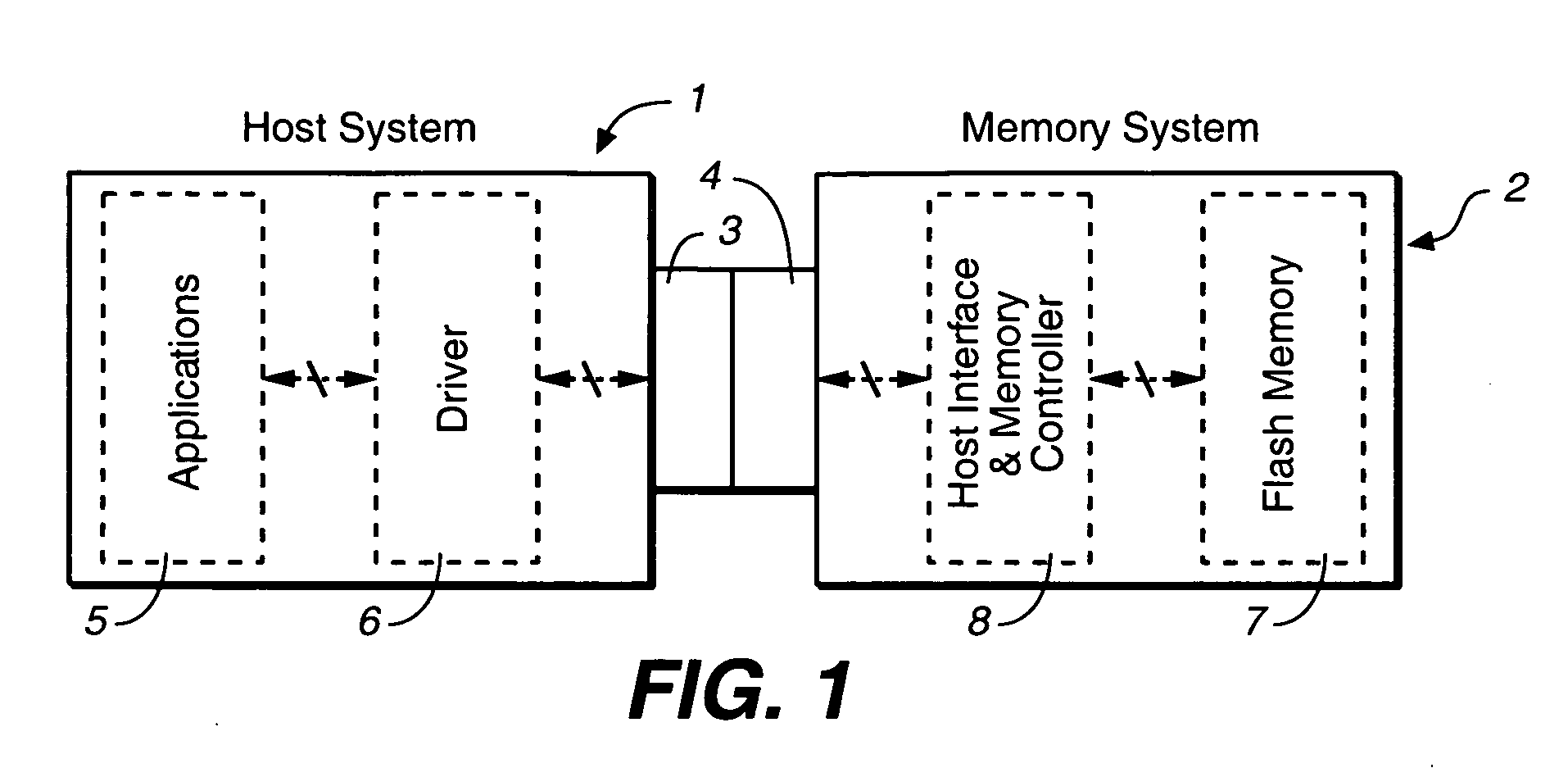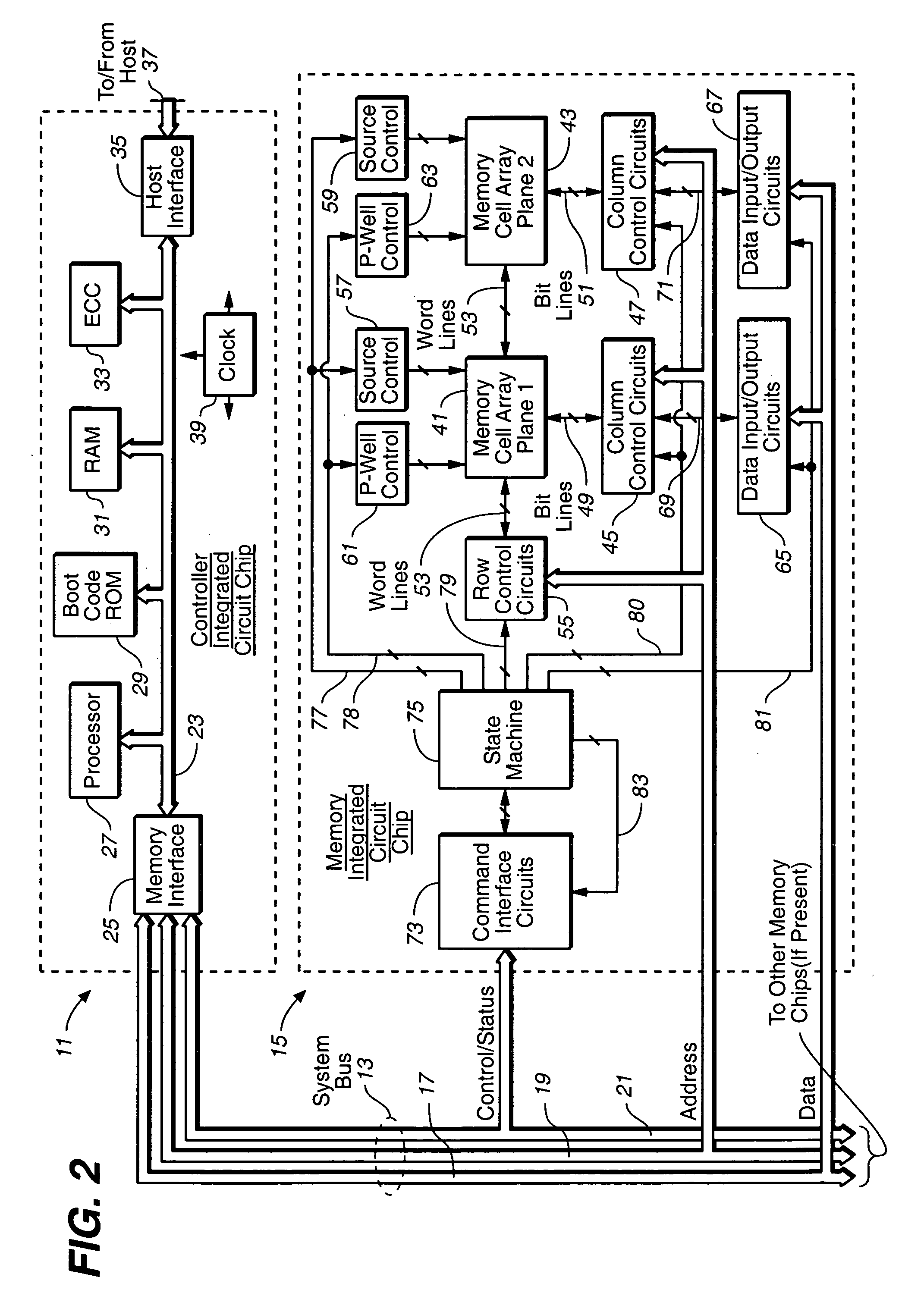Logically-addressed file storage methods
a file storage and logically-addressed technology, applied in the field of reprogrammable nonvolatile memory systems, can solve the problem of not providing for the memory system, and achieve the effect of easy recovery
- Summary
- Abstract
- Description
- Claims
- Application Information
AI Technical Summary
Benefits of technology
Problems solved by technology
Method used
Image
Examples
Embodiment Construction
Flash Memory General Description
[0028] A current flash memory system and a typical operation with host devices are described with respect to FIGS. 1-7. It is in such a system that the various aspects of the present invention may be implemented. A host system 1 of FIG. 1 stores data into and retrieves data from a flash memory 2. Although the flash memory can be embedded within the host, the memory 2 is illustrated to be in the more popular form of a card that is removably connected to the host through mating parts 3 and 4 of a mechanical and electrical connector. There are currently many different flash memory cards that are commercially available, examples being the CompactFlash (CF), the MultiMediaCard (MMC), Secure Digital (SD), miniSD, Memory Stick, SmartMedia and TransFlash cards. Although each of these cards has a unique mechanical and / or electrical interface according to its standardized specifications, the flash memory included in each is very similar. These cards are all a...
PUM
 Login to View More
Login to View More Abstract
Description
Claims
Application Information
 Login to View More
Login to View More - R&D
- Intellectual Property
- Life Sciences
- Materials
- Tech Scout
- Unparalleled Data Quality
- Higher Quality Content
- 60% Fewer Hallucinations
Browse by: Latest US Patents, China's latest patents, Technical Efficacy Thesaurus, Application Domain, Technology Topic, Popular Technical Reports.
© 2025 PatSnap. All rights reserved.Legal|Privacy policy|Modern Slavery Act Transparency Statement|Sitemap|About US| Contact US: help@patsnap.com



